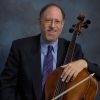
100 Cello Warm-Ups and Exercises Blog 11: Flexibility and Coordination Part 1
Robert Jesselson
 Today’s blog will deal with the twin issues of flexibility and coordination, which are closely related for string players. Flexibility is the range of motion of your joints and the ability to move freely. Flexibility can be improved by stretching, which we discussed in an earlier blog. Coordination refers to the relationship between different parts of the body during movement.
Today’s blog will deal with the twin issues of flexibility and coordination, which are closely related for string players. Flexibility is the range of motion of your joints and the ability to move freely. Flexibility can be improved by stretching, which we discussed in an earlier blog. Coordination refers to the relationship between different parts of the body during movement.
As with any physical activity, we can improve our flexibility and coordination through practice. Since the physical aspect of playing the cello is an athletic event involving the small muscles of the body, we can improve our ability by working on our flexibility and coordination both with and without the cello. When we exercise the arms, hands and fingers away from the cello, we are exploring the underlying motions which are required in playing.
Bow Hand Flexibility
When I start to work with students on string crossings, I like to break down the motions that are involved, especially with the wrist and the fingers. Some of these movements are not things that we do regularly in our daily lives, but they are important for the fine motor control needed in playing the cello. Just telling someone that we use the wrist and fingers is not enough – for most people the motions need to be analyzed, taught, and then absorbed by the body and brain through repetition. At that point the movements begin to feel “natural”.
Wrist Exercises
Once again, the order of the wrist exercises:
- Make a box with the wrist; both directions; make a circle
- Do the same holding a pencil
- Do the same holding the bow, with the little finger on top, using the left hand to help stabilize it
- Do the same thing without using the left hand, with the little finger on the top for balance
These exercises might take a few days or weeks to master, but I have never found anyone who couldn’t find the flexibility and coordination to do this. Finger Exercises Now let’s do some exercises for finger flexibility on the bow, which we use for string crossings and collé strokes.
The order of the finger exercises is:
- move fingers straight down and up so the hand is flat; then attach thumb to first finger
- hold pencil and move fingers up and down
- hold bow with little finger on top, and support with left hand – move fingers up and down
- without left hand, balancing with little finger on the top, move fingers up and down
Another right hand finger flexibility exercise is doing bow rotations, in which we are changing the amount of hair on the string. I demonstrated this in the blog on open strings.
Next week’s blog will continue the flexibility and coordination exercises, including left hand/right hand coordination exercises, some bow speed exercises, and some cadence exercises.
Subjects: Practicing, Technique
